this is my contribution to #FungiFriday by @ewkaw
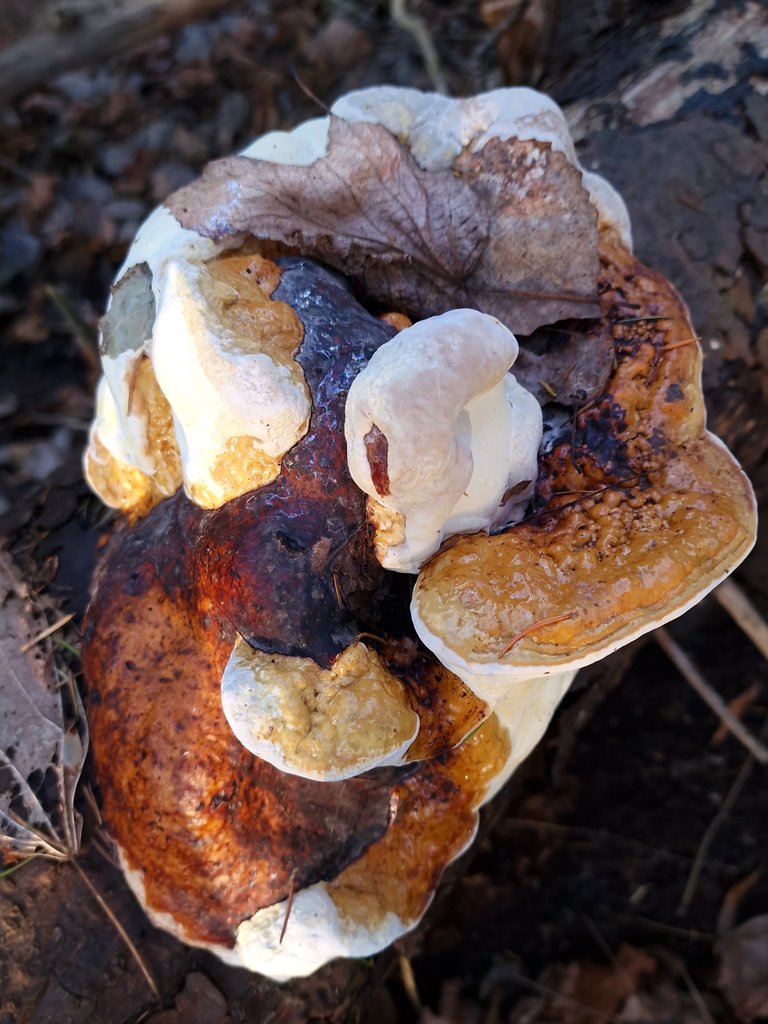
many people have a favorite fungi species, most likely an edible one that tastes especially delicious and is fairly common. or perhaps one with unique features such as outstanding appearance or great medicinal value or such. but it may seem odd that someone has a favorite individual fungus. after all most mushrooms come and go so quickly that it is unlikely to develop any personal attachment. but some species, particularly bracket fungi can live for hundreds of years and the conks for at least decades.
i first found this Fomitopsis pinicola red-belted conk specimen on a fallen log back in January 2022 when it was new, evenly shaped and totally white. i wondered then what it could be and have followed it's development since. the only photo i took at that time has been posted before. these next four shots are from September 2022 when i first identified it
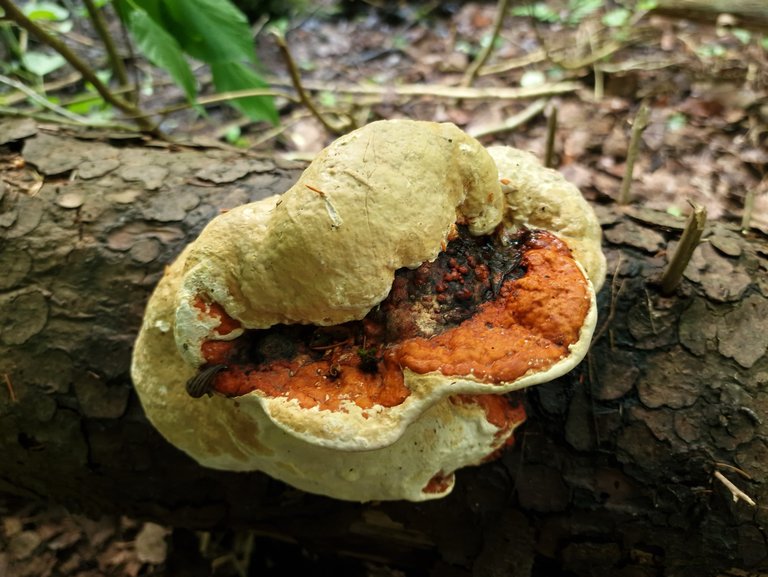
it is still quite young and mostly white but it has opened up with some of that typical orange-brown varnished look. somehow it is vaguely reminiscent of a puppy dog
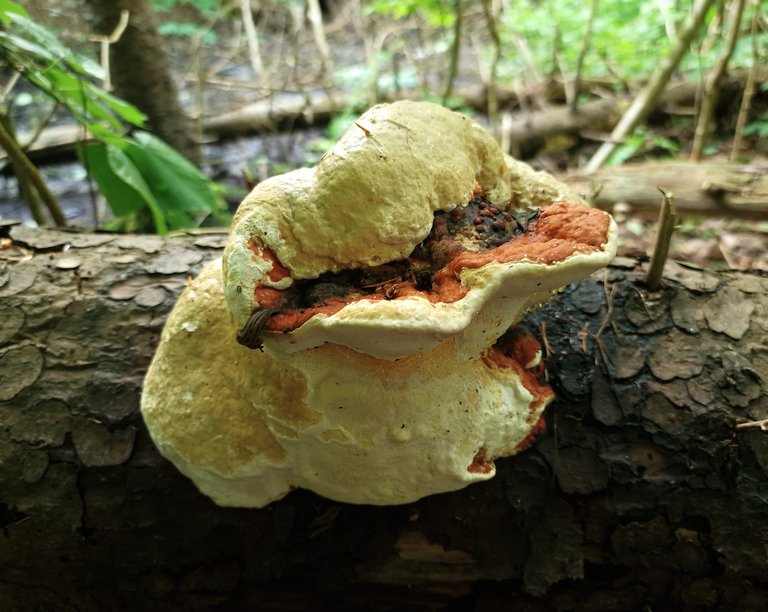
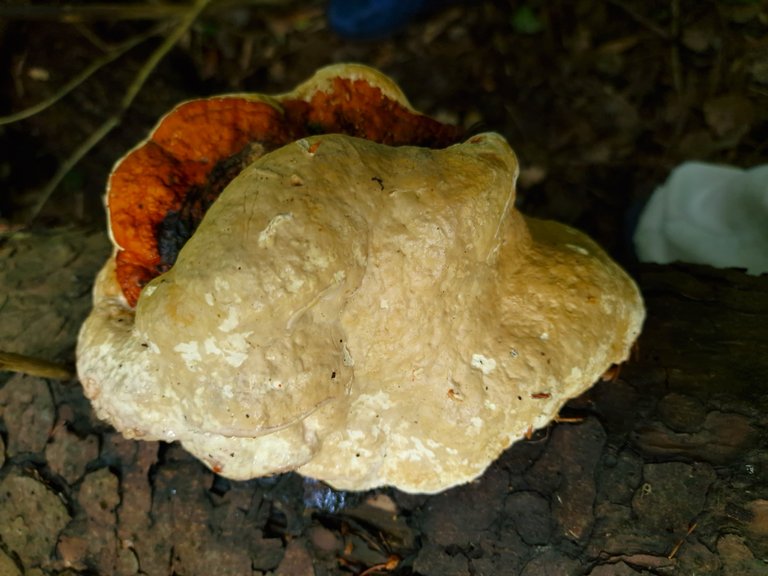
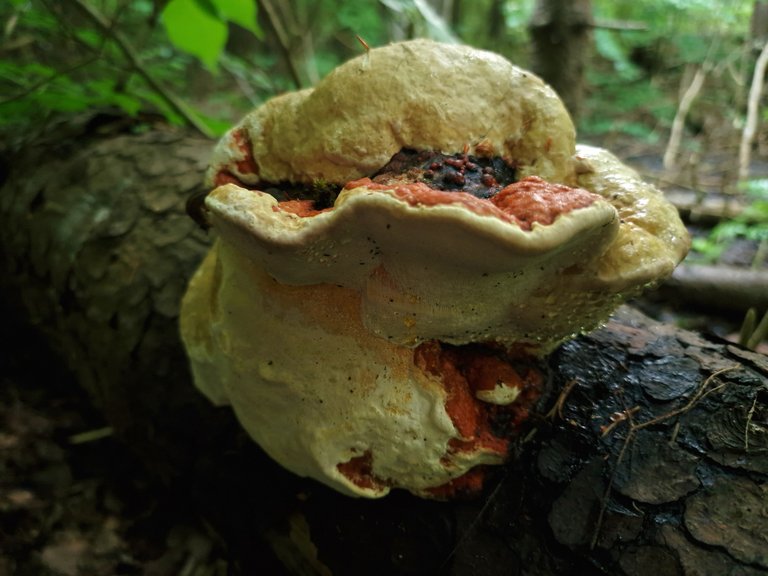
red-belted conks are among the most common fungi in temperate areas of europe and asia. it's a brown rot fungi important to the ecology of the forest
on live trees it causes what is called stem decay. it rots out the heartwood, hollowing out the tree without killing it. not so good for the lumber industry but great for the health of the forest.
This stem decay creates canopy gaps, influences stand structure and succession, increases biodiversity, and enhances wildlife habitat. The fungus also performs essential nutrient cycling functions in these forests by decomposing stems, branches, roots, and boles of dead trees. Cavities created by the fungus in standing trees provide crucial habitat for many wildlife species including bears, voles, squirrels, and a number of bird species. The lack of disturbance in these areas and longevity of individual trees allows ample time for this slow-growing decay fungus to cause significant decay. There is a growing interest in acquiring methods to promote earlier development of stem decays in second-growth stands to achieve wildlife and other non-timber objectives.
it's also been used as traditional medicine for centuries, particularly in asia with properties such as pro-apoptotic anticancer, anti-inflammatory, antioxidant and more.
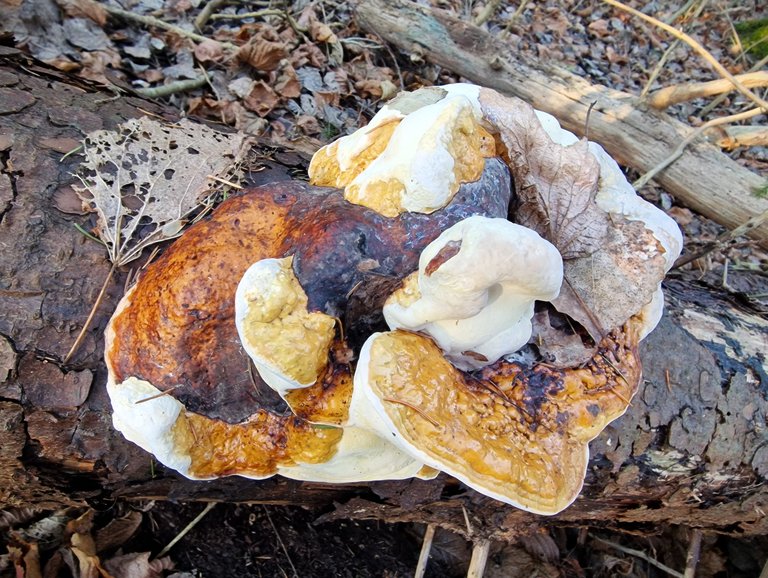
i took this last series of photos in November 2024. it is easy to see the development over time yet my friend is still quite young and has yet to develop any black areas or a typical bracket form. it's in a forest that i visit several times a year and each time i make sure to stop by to see how it is getting along. it has many years ahead of it so i will continue to follow it for years to come.
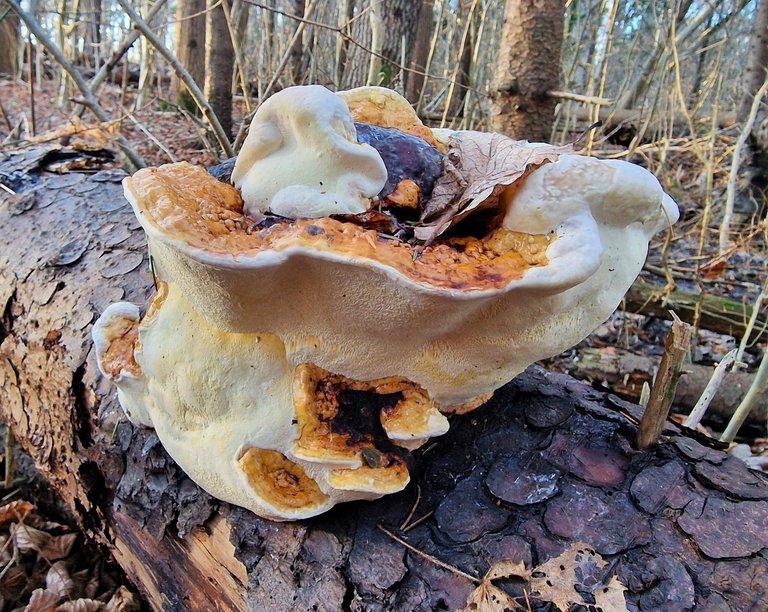
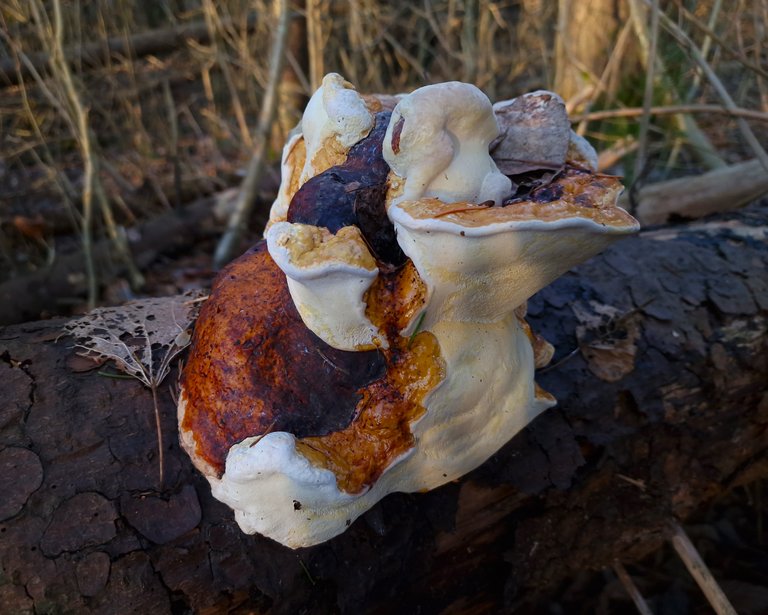
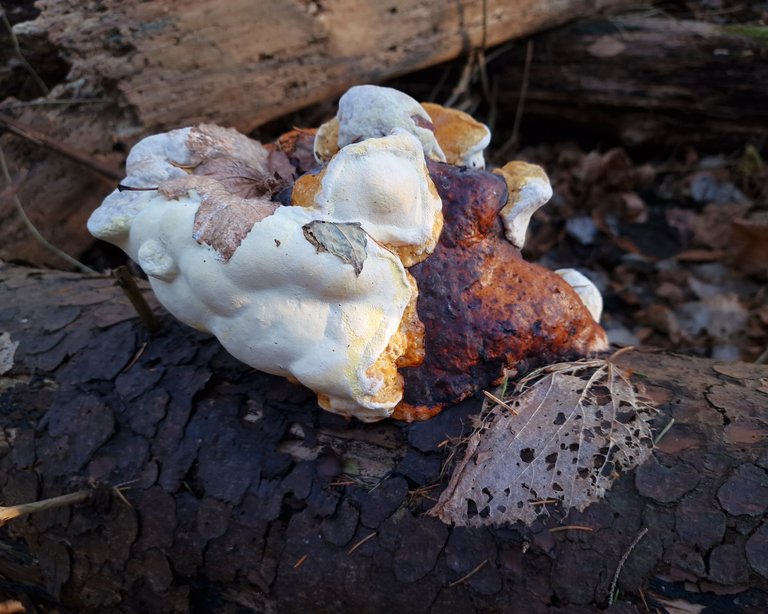
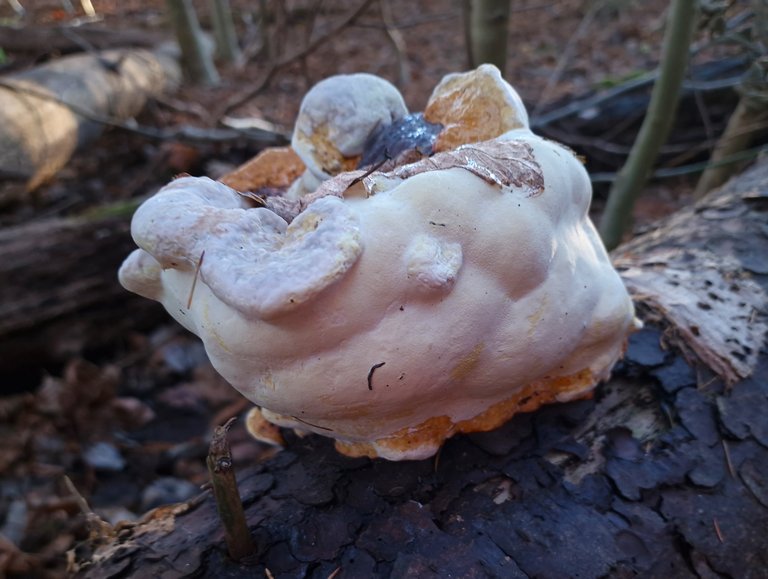
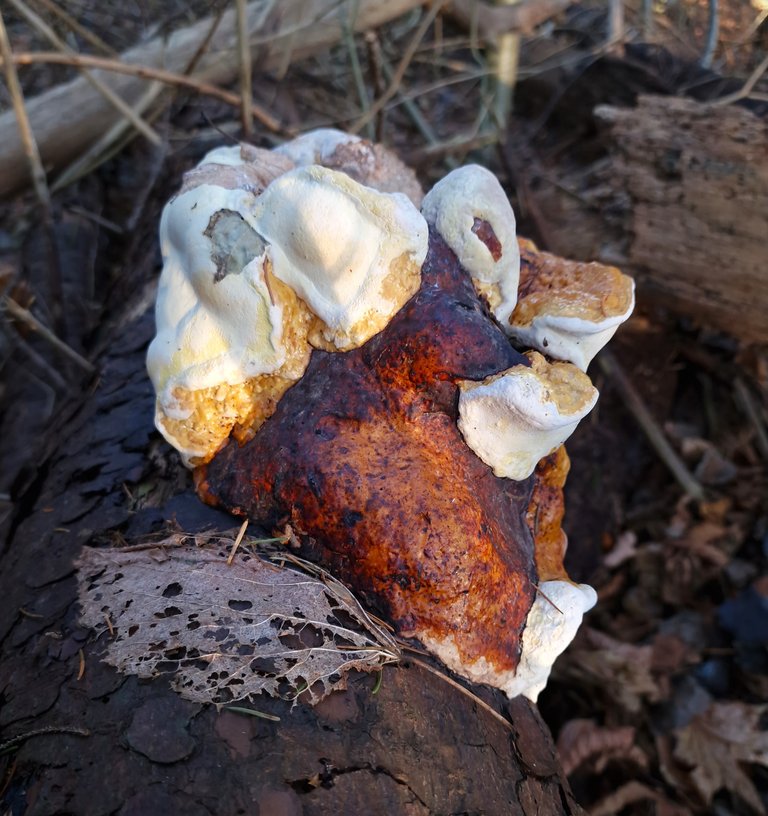
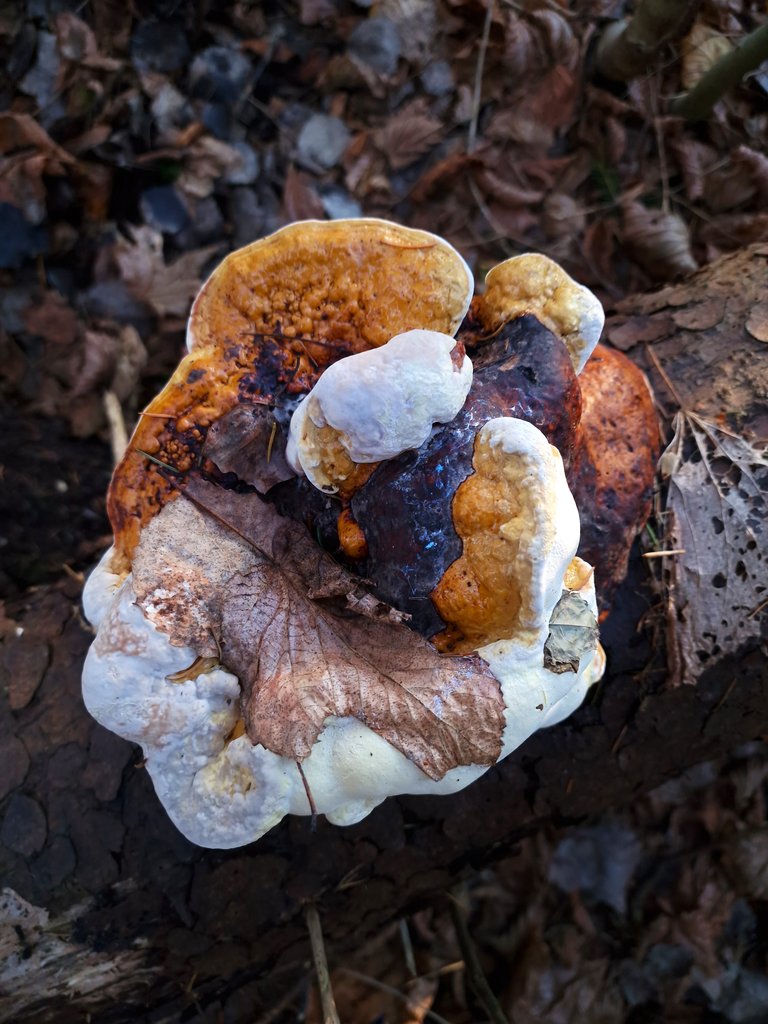
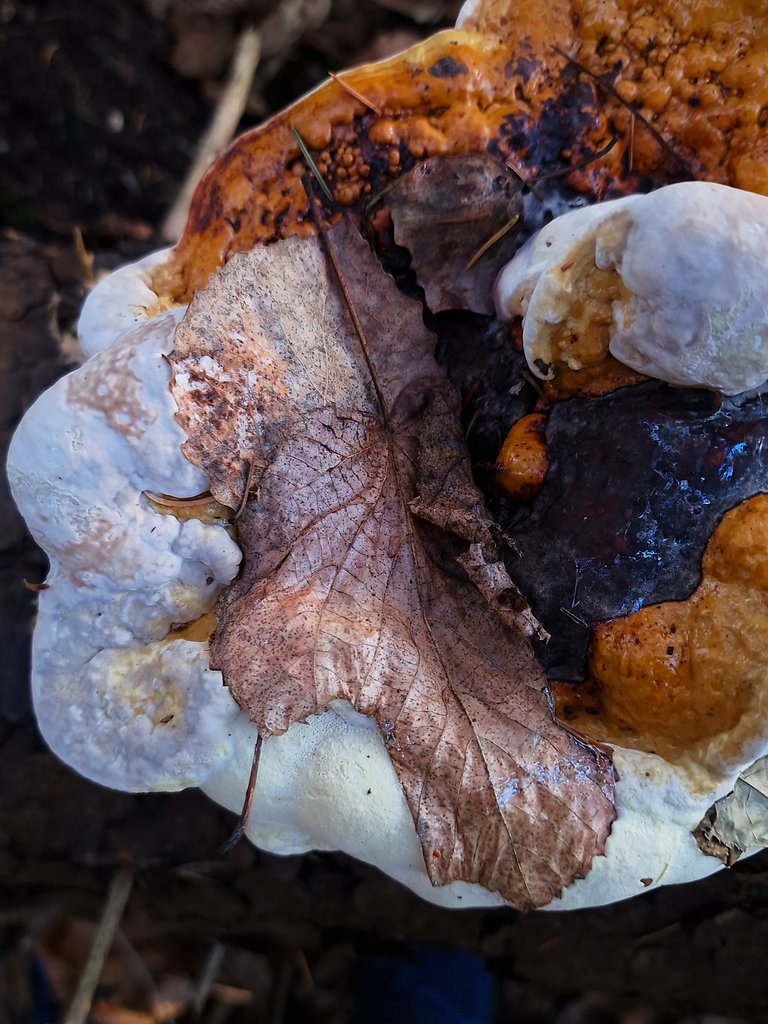 a fallen leaf has landed on my friend and formed itself to the fungus as the leaf decayed, adding some complexity to the appearance.
a fallen leaf has landed on my friend and formed itself to the fungus as the leaf decayed, adding some complexity to the appearance.
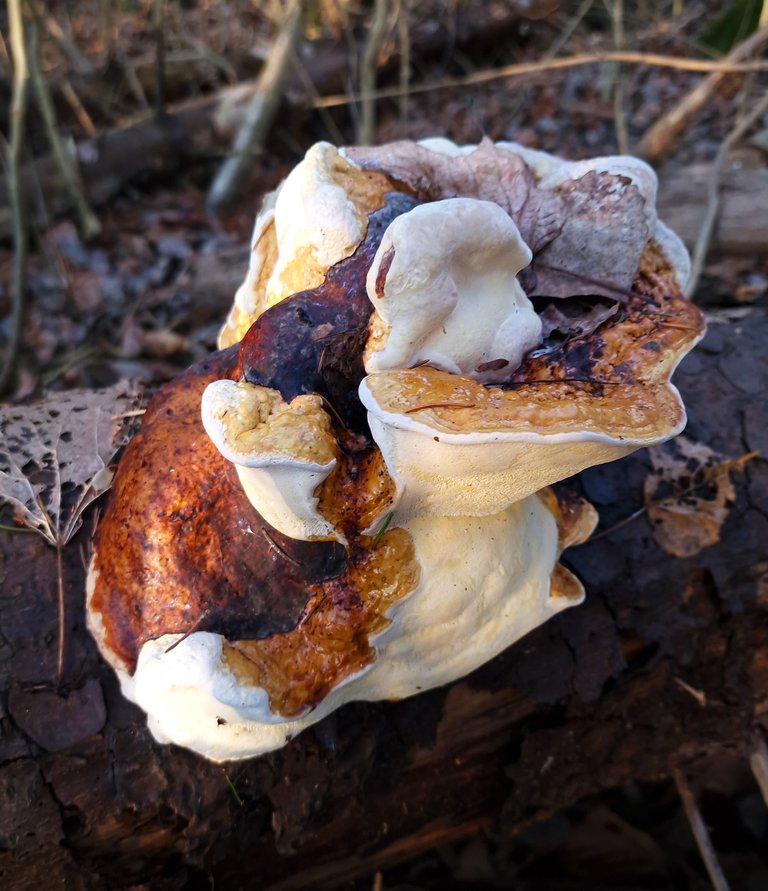

i hope you can see how someone could become so interested in a single fungus. perhaps some fellow fungi friends have similar stories
sources:
https://en.wikipedia.org/wiki/Fomitopsis_pinicola
https://pmc.ncbi.nlm.nih.gov/articles/PMC7146440/
